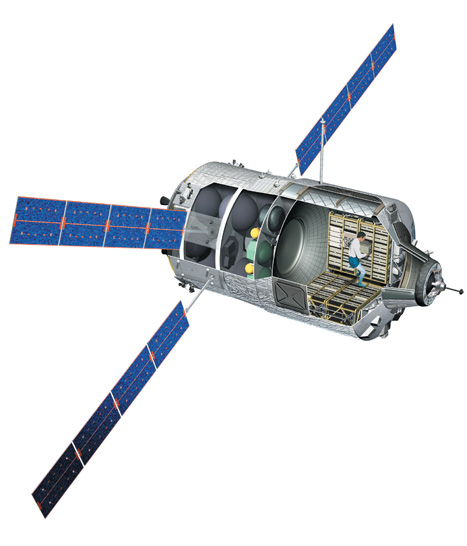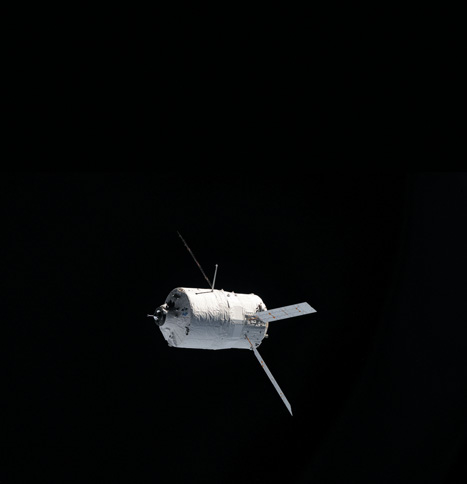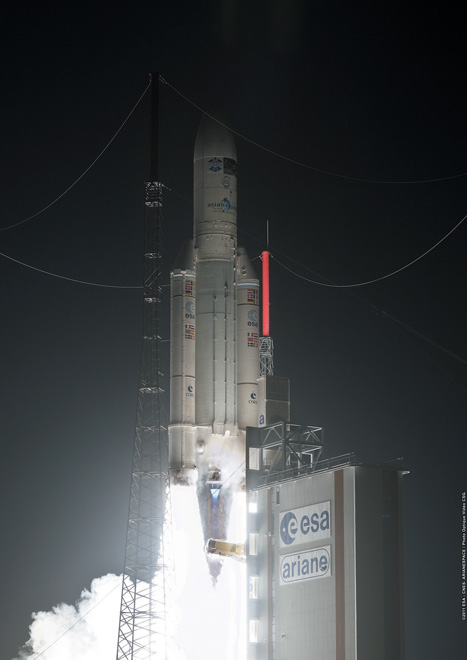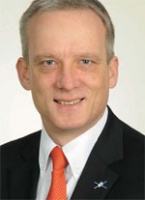Late last month, the drama, fire and thunder of a heavy rocket launch returned to the European Space Agency’s spaceport in Kourou, French Guiana, as an Ariane 5 launcher thrust its most massive cargo, the Automated Transfer Vehicle (ATV) Johannes Kepler, skywards on the start of its four-month mission to the International Space Station (ISS).

Built by EADS Astrium, the ATV is an unmanned freighter, designed to carry supplies and equipment up to the ISS. Johannes Kepler, named after the 17th-century German mathematician and astronomer, is the second of the projected five-strong ATV fleet; its predecessor, Jules Verne, travelled to the ISS in 2008.
During the final phases of the run-up to launch, EADS’ director of production and development, Wolfgang Paetsch, spoke to The Engineer about Johannes Kepler, its mission and the future of the ATV.

’You can regard Jules Verne as the prototype ATV and Johannes Kepler, ATV2, as the first production model,’ Paetsch said. This led to a very different mission profile for the two modules: Verne’s flight incorporated a series of pre-docking tests and checks, which Kepler, as the first ’routine’ flight, will not need to undergo.
In the Jules Verne mission, there was a month between launch and docking with the ISS while the ATV’s systems were checked. With the delicate, precise manoeuvring necessary to dock the massive vehicle to the ISS, these checks were essential. ’This was a major objective of the mission: to verify whether the behaviour and quality of the vehicle were as they had been designed,’ Paetsch said. With these systems now verified, Johannes Kepler will fly directly to the ISS, with docking scheduled eight days after launch.
Despite this, Kepler is carrying twice as much fuel as its predecessor, with 4,600kg of propellant in its tanks. This is because of the ATV’s other role: to act as the engines of the ISS while it is docked to the station, boosting it into higher orbits as necessary. Once the Shuttle has retired, with its final mission scheduled for this June, ATV will be the only external vehicle capable of boosting the ISS.
“We carried things to verify the behaviour; so we carried dry cargo, but not up to the limit, and we did reboosts, but not to the maximum capacity”
’Jules Verne boosted the ISS twice during its mission,’ Paetsch said. Johannes Kepler, during the three and a half months it will remain docked to the station, will perform six boosts. Kepler is also more fully loaded and will perform bigger boosting operations than Verne.
Because we were testing ATV1, we carried things to verify the behaviour; so we carried dry cargo, but not up to the limit, and we did reboosts, but not to the maximum capacity. Kepler is fully loaded and will do more work.’
There are several reasons for boosting the ISS. Because of its relatively low orbit, between 278 and 460km, there is a slight drag on the station because of the thin atmosphere it passes through. This means that a routine boost is needed several times a year to stop it falling out of the sky. Boosts are also necessary to take the station out of the path of space debris and the ISS will also need to manoeuvre into a lower orbits to allow the final Shuttle missions to dock, before returning to its usual altitude.
At 10.3 x 4.5m, the ATV can carry 6.6 tonnes of cargo, apart from the vehicle’s own fuel, which adds another 500kg. Of this, 1.6 tonnes is dry cargo - food, equipment for the astronauts and scientific experiments, and spares - stored in a pressurised compartment to which the crew has access. The remainder, the fluid cargo, consists of fuel for the ISS’s own thrusters, water and air, stored in spherical tanks behind the dry-cargo compartment.
The configuration is flexible, however. ’You can load more dry cargo and less fuel, or vice versa, depending on the mission profile,’ Paetsch said. ’ATV is designed for a six-month mission, although Kepler’s will be shorter; the mission profile is determined in the year leading up to the launch and the cargo designed accordingly.’
“The mission profile is determined in the year up to the launch and the cargo designed accordingly”
ATV launches are to be annual events and the production schedule means that ATV3, to be named Edoardo Amaldi after an Italian nuclear physicist whose work on cosmic rays was an influence on the founding of the ESA, is already well under construction. There will be very few differences between Kepler and Amaldi, Paetsch said. Indeed, apart from minor tweaks to the propulsion system and the racks in the dry-cargo compartment, Kepler and Verne are identical.

After the launch of Johannes Kepler, Paetsch will return to his base in Bremen before travelling to ATV mission control in Toulouse for the docking phase. After this, his work on the Kepler mission and the construction of Edoardo Amaldi will continue in parallel. Following Amaldi, another three ATV missions are planned, although this could be increased.
Meanwhile, talks are continuing on whether to develop the ATV for a crewed capability, turning it into ESA’s first manned system and allowing it to re-crew, as well as re-supply, the ISS. This will entail designing a manned compartment to sit on top of the ATV assembly, equipped with the docking system and means of access to the cargo bay behind it. The compartment would be able to detach from the ATV and re-enter the Earth’s atmosphere, returning astronauts after their tour of duty on the ISS. As a first stage to this, a vehicle could be developed to return cargo to Earth; the current ATVs are designed to burn up in the atmosphere.
The project to develop the crewed and uncrewed Advanced Re-entry Vehicle is still being discussed by the ESA member states.

Wolfgang Paetsch
biography
Head of Automated Transfer Vehicle programme at EADS Astrium
Education
1993 Gained a PhD from the Technical University Darmstadt after graduating with a first degree in electrical engineering. Dr Paetsch also worked at Darmstadt as a research assistant and led several research projects into control systems and robotics
Career
Early positions involved factory automation at medium-sized companies in Germany.
1996 Joined Astrium Space Transportation, responsible for automation and robotics
2009 Joined ATV programme
2011 Appointed head of ATV programme
Q&A - Freight expectations
Space missions are notorious for things changing at the last moment. Is there any leeway for late additions to the ATV?
We have a special facility for last-minute cargo. In fact, we use the same hatch as we use to dock with the ISS. There’s a small lift that goes through the hatch and you can use it to put an extra one or two cargo packs into the ATV. This is always well appreciated by the users, because there are always last-minute requests.
How do you calculate that in when you’re deciding on how much fuel to carry and for the docking calculations?
We just assume an upper limit for the cargo and all calculations, including the contingencies, are done to that upper limit. The mass of late cargo is included in that limit and, actually, if there is no late cargo, we’d make the mass up to that limit with dummies to ensure the calculations are correct.
What is the absolute last point?
When the ATV is loaded into the launch fairing, there’s nothing more that can be done. At that point, attention switches to the launcher. You understand that the launcher and cargo systems are all prepared and tested in parallel, but once the fairing is closed, attention is focused onto Ariane; or rather, on the complete system of ATV plus Ariane.
What is the view on developing ATV as a manned system to ferry astronauts to the ISS?
There is a programme called Advanced Re-entry System, with which I am partially involved. There have already been some studies on this; both technical and financial matters have to be discussed. You have to do the technical work to determine the framework in which the decision has to be taken: we assess the scope of the project and the likely cost, then the member states can understand the implication of their decision, if they decide to undertake the project. At the same time, the political discussion has to be done to determine whether the technical studies are going in the right direction.
Is there an appetite to take ESA into the manned space sphere?
As usual, such things depend on discussion with the member states and they each have different views about what they will support and what they’ll support less. Currently, it’s a very open discussion and several things are possible. It’s up to the member states of ESA to organise the debate; I can’t predict what will be the result. As usual, the discussions are rather complex.




Project to investigate hybrid approach to titanium manufacturing
What is this a hybrid of? Superplastic forming tends to be performed slowly as otherwise the behaviour is the hot creep that typifies hot...